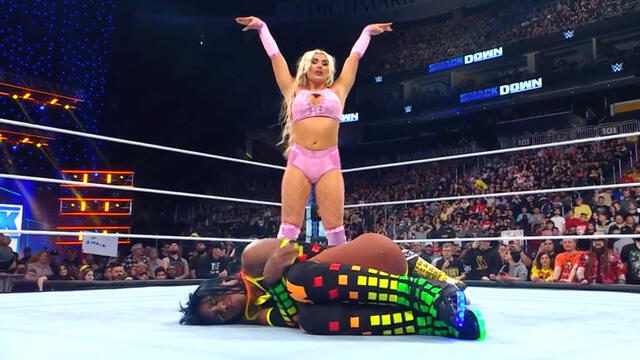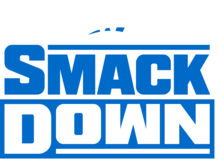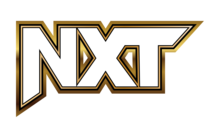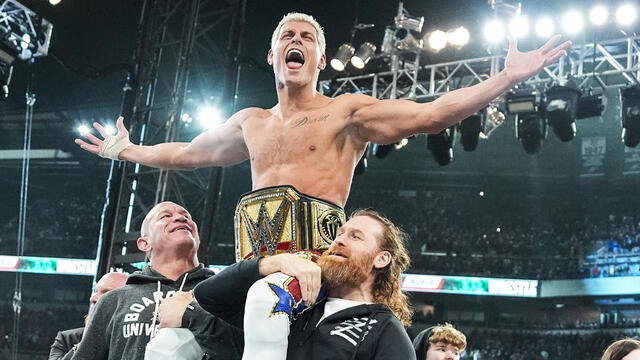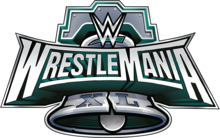
15 Greatest Revolutions in WWE history
revolution (n.): a sudden, radical or complete change
The winds of change have blown through the WWE Universe many times over the years, and though some have been but passing gusts, others have fundamentally shifted the course of sports-entertainment's history. From the emergence of new and dominant factions to the rise of immortal and unforgettable Superstars, from a bold new era to an Internet rebellion, WWE.com remembers revolutions past in this peek back at 15 of the greatest revolutions in WWE history.
CM Punk's first pipe bomb
Some revolutions transcend the medium from which they stem.
Such was the case when CM Punk sat down cross-legged and with fire in his eyes in Las Vegas, Nev., on June 27, 2011, during the final moments of Monday Night Raw.
What would soon become known across the WWE Universe as Punk’s first “pipe bomb” was an explosion of words and ideas that were both radically charged and shocking to hear. The anger and frustration Punk felt at the way things were going in his WWE career to that point was crystal clear as he told the WWE Universe what was on his mind.
Speaking plainly, Punk’s words came across not as hyped-up or overly emotional, but as factual statements issuing forth from a skilled performer who truly believed his assertion that he was "The Best in the World." As such, The Voice of the Voiceless felt that he deserved better than what he’d gotten, and he was going to let everyone know it.
On the brink of leaving WWE at the end of his contract, Punk was primed to face then-WWE Champion John Cena at WWE Money in the Bank with the title on the line. "I’m leaving with the WWE Championship," Punk promised on Raw, adding even more intrigue to an already revolutionary rant.
The aftershocks of Punk’s verbal blast were so powerful that they shook the WWE Universe to its very foundation and reverberated so far and loud that lapsed WWE Universe members had no choice but to come back home.
Now, nearly one year later, The Voice of the Voiceless has backed up his words, enjoying a memorable and lengthy reign as WWE Champion.
The Attitude Era
It seemed to go by in the blink of an eye, and yet, The Attitude Era was upon the WWE Universe for the better part of seven years.
While its first salvo may be oft-disputed — some say The Attitude Era began on Nov. 9, 1997, as an infamous scene unfolded in a Montreal ring; others argue that it was actually a year earlier, at the 1996 King of the Ring pay-per-view, when "Stone Cold" Steve Austin famously told Jake "The Snake" Roberts that "Austin 3:16 says I just whipped your ass" – what can never be brought into question is the lasting impact of a single, perfect and encapsulating descriptor:
Attitude.
Rarely can any movement be summed up so succinctly, so perfectly. But in just three syllables, the story of an entire era in WWE history can be told.
Through the late 1990s and into the early 2000s, WWE was the place to be on Monday nights.
It was the birth of "Stone Cold" Steve Austin, who added on that summer night in 1996 that his time had finally come. It was The Rock, who exploded into the pop culture lexicon as one of the biggest stars the industry has ever — and will ever — see. It was D-Generation X and the New Age Outlaws, who spit in the face of authority on a weekly basis and straddled a tank and parked it on WCW’s front lawn. It was Hardcore, it was TLC, it was at times foul-mouthed and petulant, but it was always fun and edgy and you just never knew what you might witness on any given show.
Like the end of the Monday Night Wars, for instance.
Though its opening shot may be disputed, it is impossible to disagree upon The Attitude Era’s most significant salvo — overtaking WCW in the ratings and declaring victory in the Monday Night Wars.
For all that and more, The Attitude Era will never be forgotten by those who lived through it, and it is unquestionably one of the most important revolutions in WWE history.
Ryder’s Internet Revolution
In any business, self-promotion is crucial. Today, that means utilizing social networking websites to put oneself out there in front of as many people as possible. Or, in the case of WWE Superstar Zack Ryder, to put himself over with as many people in the WWE Universe as possible.
In an age of increasingly digital landscapes, the way we communicate with one another changes on a seemingly daily basis. While the WWE Universe grows larger, the gap between WWE Superstars and their fans grows smaller. WWE Universe members have a new level of access to their favorite Superstars as YouTube, Twitter and Facebook provide opportunities to change the way they communicate with their heroes.
As Zack Ryder showed in 2011, that level of access has advantages for Superstars, as well.
Ryder brilliantly used YouTube to generate buzz among the WWE faithful and showcase his unique personality. Through his series of Z! True Long Island Story videos, Ryder displayed his extensive action figure collection, "competed" against WWE legends like The Rock and "Rowdy" Roddy Piper, gave the WWE Universe hilarious glimpses into his relationship with his dad, endlessly tortured William Regal, proclaimed his affinity for "Toy Story 3" and introduced some of WWE’s catchiest catch phrases.
He’s introduced characters like Han Sol-Bro and the Ultimate Broski, and he’s crafted Z! True Long Island Story as a truly interactive experience. Each episode, Ryder crowns a Broski of the Week, allowing the entire WWE Universe the opportunity to be an important part of the show.
Ryder’s show has been an ever speeding train since day one, picking up steam and new fans with an assortment of absurd comedic bits and obscure pop culture references. And, while Z! True Long Island Story is undoubtedly one of the funniest things online right now, the true purpose behind the show has always been crystal clear.
Ryder took full advantage of today’s technology to start what he called the Ryder Revolution, a movement that elevated the Superstar from a cult favorite known only by a relatively small number in the WWE Universe to one of the hottest Superstars in WWE.
He’s cemented his place in the WWE Universe and, so far, Ryder’s Internet revolution has been an incredible success.
People Power
Some revolutions aren’t very popular, but they have the power to evoke change nonetheless.
Raw and SmackDown General Manager John Laurinaitis knows a thing or two about starting unpopular-but-effective revolutions. The GM’s self-proclaimed People Power movement may not be the best-loved in WWE history, but it’s hard to argue with its results.
Since Laurinaitis earned the opportunity to become GM of both shows after his team stole a WrestleMania XXVIII victory over Team Teddy, Big Johnny has taken every opportunity to display his newfound power to the WWE Universe, all under the guise of giving the people "what they want."
Less concerned with what the people actually want, though, and more worried about securing his place on top, Laurinaitis’ time in charge has been marked by the GM’s penchant for scheduling unfair matches for Superstars who have come out against him.
Just one night after "Mr. Excitement’s" victory on The Grandest Stage of Them All, he set his sights on Team Teddy’s captain and United States Champion, Santino Marella. The beloved Milan Miracle was ordered to defend his US Title in a Triple Threat Match against Team Johnny’s own Jack Swagger and Dolph Ziggler. In addition, Laurinaitis ordered that WWE Champion CM Punk — who openly challenged the GM’s authority — put his title on the line against The World’s Storngest Man, Mark Henry, that very same night!
Though both Santino and Punk emerged victorious, it became abundantly clear that Laurinaitis’ definition of People Power was going to prove bad news for a number of WWE Universe favorites over whom Big Johnny was going to exert his will.
Just ask John Cena.
In a display of People Power, Laurinaitis announced an Extreme Rules Match between Cena and Brock Lesnar at WWE Extreme Rules. When Cena managed to overcome Lesnar in that brutal battle, however, the GM’s harassment of The Cenation Leader only escalated.
Laurinaitis would eventually show his true colors, telling the WWE Universe to "go to hell" on the May 18 episode of SmackDown ( WATCH), making People Power the most ironically named revolution on our list.
The nWo
Mr. McMahon was so convinced in 2002 that WWE co-owner Ric Flair would ruin the company that The Chairman saw no choice but to beat Flair to the punch and inject a "lethal dose of poison." To do so, he enlisted the same cancerous force that brought WCW to its knees: the New World Order.
Despite McMahon’s admitted reticence over involving the lawless band of Superstars, the original nWo triumvirate of "Hollywood" Hulk Hogan, Kevin Nash and Scott Hall tried mightily to fulfill their end of the bargain. Harkening back to their original destructive days in WCW, they unleashed holy hell on WWE main eventers The Rock and "Stone Cold" Steve Austin. (In one particularly extreme case, The nWo trapped The Rock inside an ambulance and then plowed a tractor-trailer into it.)
Unlike the WCW incarnation, which ran roughshod for years, the second coming of the nWo was mercifully short-lived, but it was not without shuffling of big-name players. After Hogan found religion and shed the black-and-white nWo gear for his traditional "Hulkster" yellow-and-red, Nash and Hall gave him the boot. Coming into the fold, meanwhile, were X-Pac, Booker T, Big Show and even Shawn Michaels. Though the nWo made overtures about recruiting Triple H, those lofty plans were quashed when the group abruptly disbanded. The dissolution was owed, in large part, to McMahon’s restructuring of WWE – a "shakeup" that included declaring The nWo era "over."
Hulkamania
Bolstered by a steady regimen of training, vitamins and prayers, the phenomenon known as Hulkamania swept the world in the 1980s and launched Hulk Hogan into a stratum of crossover popularity previously off-limits to WWE Superstars. Galvanized in part by Hogan’s cameo as "Thunderlips" in the 1982 classic "Rocky III," Hulkamania surged full-tilt after Hogan unseated The Iron Sheik to win the WWE Championship in January 1984.
From there, Hogan’s ascent was simply unstoppable. He broke Andre the Giant’s legendary undefeated streak in as monumental a manner as possible: by bodyslamming The Eighth Wonder of the World in front of 93,000-plus at WrestleMania III.
Coinciding with the mid-'80s "Rock ‘n’ Wrestling" connection that tied WWE and the groundbreaking MTV at the hip, Hulkamania found pop culture support in the form of celebrity pals such as Mr. T and Cyndi Lauper. (Hogan teamed with the former at WrestleMania I and appeared on-stage with the latter at the 1985 Grammy Awards.) Hogan’s considerable in-ring success was parlayed into outside ventures, enabling Hogan to become arguably the most visible Superstar in history. From an endorsement deal with Right Guard to a Hulkster-themed cartoon show to his own pasta restaurant (the aptly named Pasta-mania), Hogan turned Hulkamania into a brand, and that brand came to define much of WWE until Hogan’s departure in 1993.
Speaking to NBC SportsWorld anchor Bob Costas in 1985, Hogan summed up Hulkamania this way: "Hulkamania is like a fever, it's like the plague – but in a good way. Everywhere you go, everything you do, is positive, man."
Though Hulkamania never truly recaptured its mid-'80s momentum, Hogan admirably carried the legacy all the way into the aughts, reconnecting with the WWE Universe in 2002.
The Hart Foundation (1997)
The year 1997 was one of transition for WWE, but one of the key players of WWE’s fading "New Generation," Bret "Hit Man" Hart, was not completely on board with the more risqué direction in which WWE was heading. Emboldened by what he perceived to be deteriorating family values on the part of the WWE Universe, Hart portrayed the changes in WWE as symbolic of a larger cultural problem facing America.
As such, Hart nearly declared war completely on the U.S. fan base he thought to be filled with reprobates, and his comments drew the ire of countless American Superstars. Corralling brother Owen, brothers-in-law The British Bulldog and Jim “The Anvil” Neidhart and family friend and Hart Dungeon graduate "Loose Cannon" Brian Pillman into his new Hart Foundation stable, Hart led an onslaught against fan favorites "Stone Cold" Steve Austin, Ken Shamrock and others in the spring and summer of 1997.
Besides helping to usher in (however reluctantly) the Attitude Era, the Hart Foundation was revolutionary for the way it divided the WWE Universe internationally. While the pink-and-black attack was jeered stateside, it was roundly applauded in Europe and received a hero’s welcome Canada.
WrestleMania
What can be said of an event that celebrated its 28th installment this year? WrestleMania I – the only WrestleMania to be broadcast via closed circuit – was a huge risk when WWE rolled it out in 1985. Now, nearly 30 years later, WrestleMania is universally identified as the gold standard in sports-entertainment events. It’s the absolute can’t-miss show of the year – the equivalent of a TV show’s season finale and a season debut rolled into one. Communities vie to be its host city, members of the WWE Universe travel from around the globe to attend, and the lineup of WrestleMania events has grown from a single card on Sunday to a week of festivities, mirroring the NFL's SuperBowl.
In short, WrestleMania is WWE’s biggest day of the year, and its birth changed the complexion of the entire wrestling industry. Known affectionately by any number of nicknames – The Grandest Stage of Them All, The Show of Shows and The Showcase of the Immortals, to name a few – WrestleMania has served as the platform for many of WWE’s most legendary matches and moments. Be it Shawn Michaels fulfilling his boyhood dream by winning the WWE Title or The Rock and John Cena clashing in their "Once in a Lifetime" Match that broke WWE's record with 1.3 million pay-per-view buys worldwide, WrestleMania never disappoints in exciting the WWE Universe.
D-Generation X
Raunchy, disrespectful and unapologetically crass are just a few of the words one could use to describe D-Generation X. Cutting-edge, inimitable, fearless and – yes – revolutionary, also fit the bill. Whether talking about the original DX team of Shawn Michaels, Triple H and Chyna, or the expanded faction of Triple H, Chyna, X-Pac and The New Age Outlaws, the central tenets of DX remained the same: nothing was sacred, and nobody was safe from their controversial antics.
That included WWE’s main competition in the late 1990s, World Championship Wrestling, whose Monday Nitro had trounced Raw in the ratings for the better part of two years (thanks in large part to WCW’s raiding of WWE talent). During the height of the Monday Night Wars, DX memorably launched an offensive that brought the fight to WCW’s door … literally.
The date was April 27, 1998, and Nitro was airing live from the Norfolk Scope Arena in Norfolk, Va. – a stone’s throw away from Raw’s host site that night, Hampton, Va. Dressed in army fatigues and armed with a megaphone, the members of DX drove a tank (with a cannon on top) around the Norfolk Scope and took turns making fun of WCW and rallying fans behind their cause.
Years later in a WWE DVD release, former WCW President Eric Bischoff described the scene as a game-changer in the Monday Night Wars.
"I think that was one of the first big moves this company made, actually, to regain its position, because it was a ballsy, arrogant, aggressive, ruthless move," he said.
The Invasion & The Alliance
It was a revolution sports-entertainment fans had dreamed of for years, and in spring of 2001, that dream became a reality when WWE acquired WCW in a shocking industry-changing blockbuster.
Mr. McMahon’s son Shane — not The Chairman himself — turned out to be the new WCW owner. The Invasion began slowly, but Booker T made a huge statement by interfering in the main event of the King of the Ring pay-per-view. Booker did so again the following night on Raw, leading Jim Ross to exclaim, "The battle lines have been drawn!"
WCW was given its own airtime during WWE programming, complete with their own announce team, ring decorations and sanctioned championship matches. But WCW wasn’t alone. After Shane’s sister Stephanie purchased ECW, the two promotions joined forces to form the massive Alliance in an attempt to topple WWE. “Stone Cold” Steve Austin and Kurt Angle eventually defected to the rival faction before a massive Winner-Take-All Elimination Match at Survivor Series was set to determine which company would reign supreme.
The huge five-on-five brawl pitted The Alliance’s team against Team WWE. The match was ultimately won by WWE when Angle switched sides once again, but The Invasion and subsequent Alliance merger is a revolution the WWE Universe will not soon forget.
The Corporate Ministry
For months in 1998 and into 1999, Mr. McMahon’s Corporation and The Undertaker’s Ministry of Darkness were dominant forces of evil in WWE. The Corporation heralded clean-cut enforcement, while The Ministry included a collection of demonic monsters. Thankfully, the two factions were at odds with one another, preventing each from truly commandeering all of WWE. But when The Chairman took a leave of absence, his son Shane joined with The Deadman to form The Corporate Ministry on the very first episode of SmackDown.
With The Corporation’s political tactics and The Undertaker’s devious notions of power, the massive entity seemed unstoppable. Only WWE Champion "Stone Cold" Steve Austin seemed to remain as hope for good to triumph. But when The Undertaker challenged for Austin’s title on pay-per-view, special guest referee Shane McMahon cheated The Texas Rattlesnake with a fast count, bringing WWE’s most coveted prize to The Corporate Ministry. The group also boasted the Tag Team Champions, European Champion and Hardcore Champion among its members, and in The Corporate Ministry’s most defining and notorious moment, the "Higher Power" that both Shane and The Phenom had referred to was revealed to be none other than Mr. McMahon himself.
However, a group of disgruntled ex-Corporation members banded together to form The Union, and achieved a decisive victory over The Corporate Ministry. Facing too much adversity from rebels in the locker room, the group slowly dissolved once Austin regained the WWE Championship.
1990s ECW Invasion by Joey Styles
WWE Chairman and CEO Vince McMahon first learned that WWE fans had taken notice of ECW at the 1995 King of the Ring event in ECW's city of birth, Philadelphia.
During the tournament final match to crown WWE’s King of the Ring between King Mabel and Savio Vega (no, seriously), the Philly crowd suddenly started to angrily chant, "ECW! ECW! ECW!" at the two Superstars who were both dressed in gimmicky (did I just invent a word?) circus clown-like outfits worse than their clownish personalities. Conversely, Extreme Championship Wrestling had returned to wrestling’s roots, presenting their performers as the real people they were, though it can be said that ECW’s locker room of malevolent misfits was unlike wrestlers ever seen before.
ECW wrestlers The Sandman, Tommy Dreamer, Tazz and Paul Heyman were in the front row on September 22, 1996, at the In Your House: Mind Games event in Philadelphia. During that show, The Sandman interfered in a strap match between Savio Vega and Bradshaw (later know as JBL), and spit beer in Vega’s face. While doing play-by-play, McMahon acknowledged the local promotion ECW on the air — this was ECW’s first exposure to a national pay-per-view audience.
On February 24, 1997, ECW debuted on national television on Monday Night Raw at the Manhattan Center in New York City at the invitation of Vince McMahon himself, who was looking for anything to draw viewers away from WCW Monday Nitro. ECW wrestlers participated in three matches in front of the yet to be named WWE Universe while McMahon called the action with both Jerry "The King" Lawler and Paul Heyman. The Manhattan Center crowd was seemingly half comprised of ECW fans who passionately chanted "ECW! ECW! ECW!" while Extreme Championship Wrestling’s best were in the ring and "boring" when WWE Superstars competed. In fact, many of the ECW faithful left after the ECW portion of the show, leaving WWE with empty seats facing the camera for the remainder of their televised event. HA!
The Nexus
They might have been young, but the Rookies of NXT Season 1 didn’t let inexperience stop them from making, potentially, the most game-changing statement of any stable in WWE history. Uniting under the name of The Nexus, the eight Superstars brazenly debuted in the summer of 2010, interfering in John Cena’s match against CM Punk and literally dismantling the ring before the entire WWE Universe in a symbolic statement of their intentions.
Over the following months, The Nexus would utilize their pack mentality to systematically terrorize the WWE roster, at one point conscripting Cena himself into their ranks. The group eventually fractured into two factions in 2011 – The New Nexus (led by CM Punk, who deposed Wade Barrett as its leader) and The Corre – before disintegrating altogether, but its pedigree remains: of the eight original Nexus members, there is one World Heavyweight Champion (Daniel Bryan), one Intercontinental Champion (Barrett), and three WWE Tag Team Champions (David Otunga, Justin Gabriel and Heath Slater).
The McMahon-Helmsley Era
They say power corrupts. If that’s so, then the McMahon-Helmsley Faction was absolutely corrupted.
An unholy combination of Triple H’s skills and the boardroom influence of Stephanie McMahon, the McMahon-Helmsley Era was the product of an unlikely marriage and an inimitable exhaust for limitless authority. At first, Triple H’s dubious marriage to Stephanie seemed headed for a disastrous end, but when The Billion-Dollar Princess turned on her father and allied herself with The King of Kings, a near-unbeatable alliance was born.
The Faction – a combination of the McMahon-led Corporation and Triple H’s DX – made it their business to dominate WWE, helping The Game capture (and keep) the WWE Title while The New Age Outlaws ran rampant over the Tag Team division. For two years, the Faction’s power ran nearly unchecked, and in fact, it was only an injury to Triple H’s quadriceps that truly put the regime on ice.
Odd that such a dominant group should fall due to chance, but as they say, no one man should have all that power.
The Austin Era
When "Stone Cold" Steve Austin vanquished Jake "The Snake" Roberts in the finals of the 1996 King of the Ring, he shocked the WWE Universe by not only bragging about dismantling his aging opponent, but refusing to pay the vanquished Roberts the proper respect (Austin’s first command as king? "Get that piece of trash out of my ring!").
From then on, the "Austin Era" was one act of zeitgeist-shattering defiance after another, until they began to mount and Austin’s brazenness itself became the new status quo. No authority was safe from The Texas Rattlesnake in the years that followed, although Austin seemed to have a special place in his heart for terrorizing Mr. McMahon above all others.
Suffice it to say, for a while, WWE was the only workplace in history where a man can spray his boss with a beer hose without fear of reprisal. Aww, hell yeah.
WWE Shows Latest Results
Raw results, April 15, 2024: Chad Gable viciously attacks Sami Zayn after losing to Zayn in Intercontinental Title Match!
Full ResultsSmackDown results, April 19, 2024: Tiffany Stratton introduces Bayley and Naomi to Tiffy Time with a sneak attack
Full ResultsWWE NXT results, April 16, 2024: Trick Williams defeats Carmelo Hayes in a Steel Cage Match
Full Results















